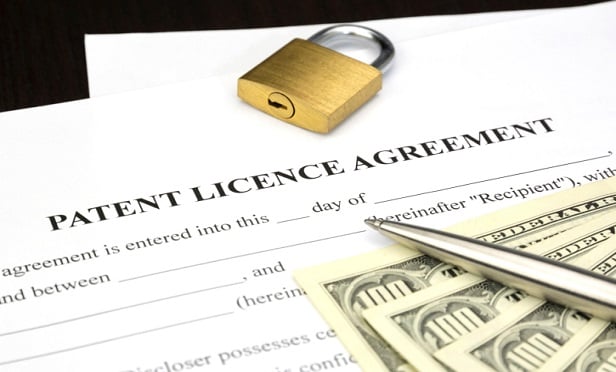Columns & Departments

IP News
Penn State Files Trademark Lawsuit against Sports Beer Brewing Company Can OSU Trademark the Word "The"?
Features

Analysis of Warhol Art Fair Use Ruling
The U.S. District Court for the Southern District of New York held that a series of silkscreen paintings and prints by Andy Warhol based on a photograph of music legend Prince taken by Lynn Goldsmith constituted a transformative fair use.
Features

Seeing Green: Protecting Brands In the Cannabis Industry
Branding is not a new concept, nor are the various intellectual property laws that protect brands. What is new to most is how this burgeoning industry can take advantage of those laws within the context of state and federal restrictions.
Features

Rights and Obligations In Patent Licenses
The owner of a commercially successful patent may have competing desires. On one hand, the patent owner wants to protect the patent and secure its maximum benefit; on the other hand, the patent owner wants to avoid enforcement litigation with competitors because it is expensive and puts the patent at risk.
Features

Did Congress Create Unintended Risks to Innovators In the AIA?
Many observers greeted the passage of the AIA into law as a long-overdue overhaul of U.S. patent law that aligned it with patent systems prevailing in the rest of the world. Who knew what mischief just seven of the AIA's more than 25,000 words contained? The U.S. Supreme Court answered earlier this year.
Features

SCOTUS to Address Whether Lanham Act Requires Willful Infringement for Profit Disgorgement
The decision in Romag Fasteners v. Fossil will bring welcome uniformity, ending the status quo where eligibility to recover profits under the Lanham Act depends on which court is deciding the dispute
Features

Limit in Supreme Court Striking Down Ban On 'Scandalous' Trademarks
In the U.S. Supreme Court's ruling in Iancu v. Brunetti, Justice Sonia Sotomayor's dissent cautioned that the decision is likely to pave a path to a "coming rush to register [vulgar, profane, or obscene] trademarks." The reasoning stems from the court's majority finding that a portion of 15 U.S.C. §1052 — which had previously prohibited the registering of "immoral" or "scandalous" trademarks — is unconstitutional. Practically speaking, however, this "coming rush" will likely not be the case, even via the entertainment industry.
Features

Supreme Court Holds Bar Against Registration of Immoral or Scandalous Marks Violates the First Amendment
Iancu v. Brunetti The Supreme Court held the bar against registration of immoral or scandalous marks "collided" with well-established free speech doctrine, namely, that laws disadvantaging speech based on the views expressed thereby violate the First Amendment.
Features

Case on 'Coolcore' Marks Settles a 34 Year Debate Regarding Bankruptcy and IP Law
The U.S. Supreme Court issued its long-awaited decision in <i>Mission Product Holdings, Inc. v. Tempnology </i>, ruling that a trademark licensee can retain its rights under a trademark license agreement that is rejected by the licensor as an executory contract in bankruptcy.
Features

Takeaways from the Recent Qualcomm Decision
The DOJ's intervention, and the judge's ultimate decision, has exposed tensions between the DOJ and FTC, and within the FTC itself, and public scrutiny is far from over as the case heads to the Ninth Circuit on appeal.
Need Help?
- Prefer an IP authenticated environment? Request a transition or call 800-756-8993.
- Need other assistance? email Customer Service or call 1-877-256-2472.
MOST POPULAR STORIES
- Strategy vs. Tactics: Two Sides of a Difficult CoinWith each successive large-scale cyber attack, it is slowly becoming clear that ransomware attacks are targeting the critical infrastructure of the most powerful country on the planet. Understanding the strategy, and tactics of our opponents, as well as the strategy and the tactics we implement as a response are vital to victory.Read More ›
- Major Differences In UK, U.S. Copyright LawsThis article highlights how copyright law in the United Kingdom differs from U.S. copyright law, and points out differences that may be crucial to entertainment and media businesses familiar with U.S law that are interested in operating in the United Kingdom or under UK law. The article also briefly addresses contrasts in UK and U.S. trademark law.Read More ›
- The Article 8 Opt InThe Article 8 opt-in election adds an additional layer of complexity to the already labyrinthine rules governing perfection of security interests under the UCC. A lender that is unaware of the nuances created by the opt in (may find its security interest vulnerable to being primed by another party that has taken steps to perfect in a superior manner under the circumstances.Read More ›
- The Unlicensed Real Estate Broker in New York: BewareThe U.S. District Court for the Northern District of New York recently determined that because New York prohibits unlicensed real estate brokers from pursuing payment in its courts for services rendered, a plaintiff who performed real estate work for a client who then did not pay had no standing to sue.Read More ›
- Players On the MoveA look at moves among attorneys, law firms, companies and other players in entertainment law.Read More ›
